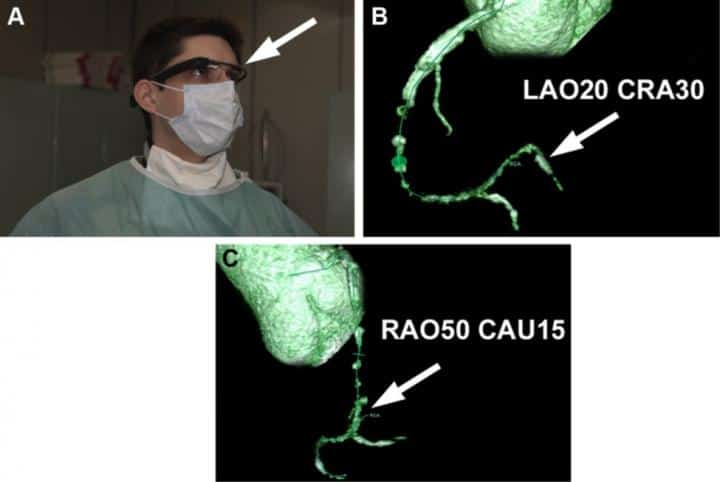The system - described in the Canadian Journal of Cardiology - was designed specifically for percutaneous coronary intervention (PCI), a technique used by cardiologists to insert stents in blocked coronary arteries. When performing PCI, doctors increasingly rely on coronary computed tomography angiography (CTA), which combines the technology of a conventional CT scan with that of traditional angiography to create detailed images of the blood vessels in the body.

With the Google Glass virtual reality application, three-dimensional CTA data can be projected into the doctor’s field of vision during the procedure. Physicians from the Warsaw Institute of Cardiology used the system to successfully restore blood flow in the occluded right coronary artery of a 49-year-old male patient.
“This case demonstrates the novel application of wearable devices for display of CTA data sets in the catheterisation laboratory that can be used for better planning and guidance of interventional procedures,” said lead researcher Dr Maksymilian P. Opolski from the Warsaw Institute of Cardiology.
“(It) provides proof of concept that wearable devices can improve operator comfort and procedure efficiency in interventional cardiology.”
Although the system was developed specifically with PCI in mind, Opolski believes wearable technology could be used in a range of cardiac practices.
“Wearable devices might be potentially equipped with filter lenses that provide protection against X-radiation,” he said. “We believe wearable computers have a great potential to optimise percutaneous revascularisation, and thus favourably affect interventional cardiologists in their daily clinical activities.”




Swiss geoengineering start-up targets methane removal
No mention whatsoever about the effect of increased methane levels/iron chloride in the ocean on the pH and chemical properties of the ocean - are we...